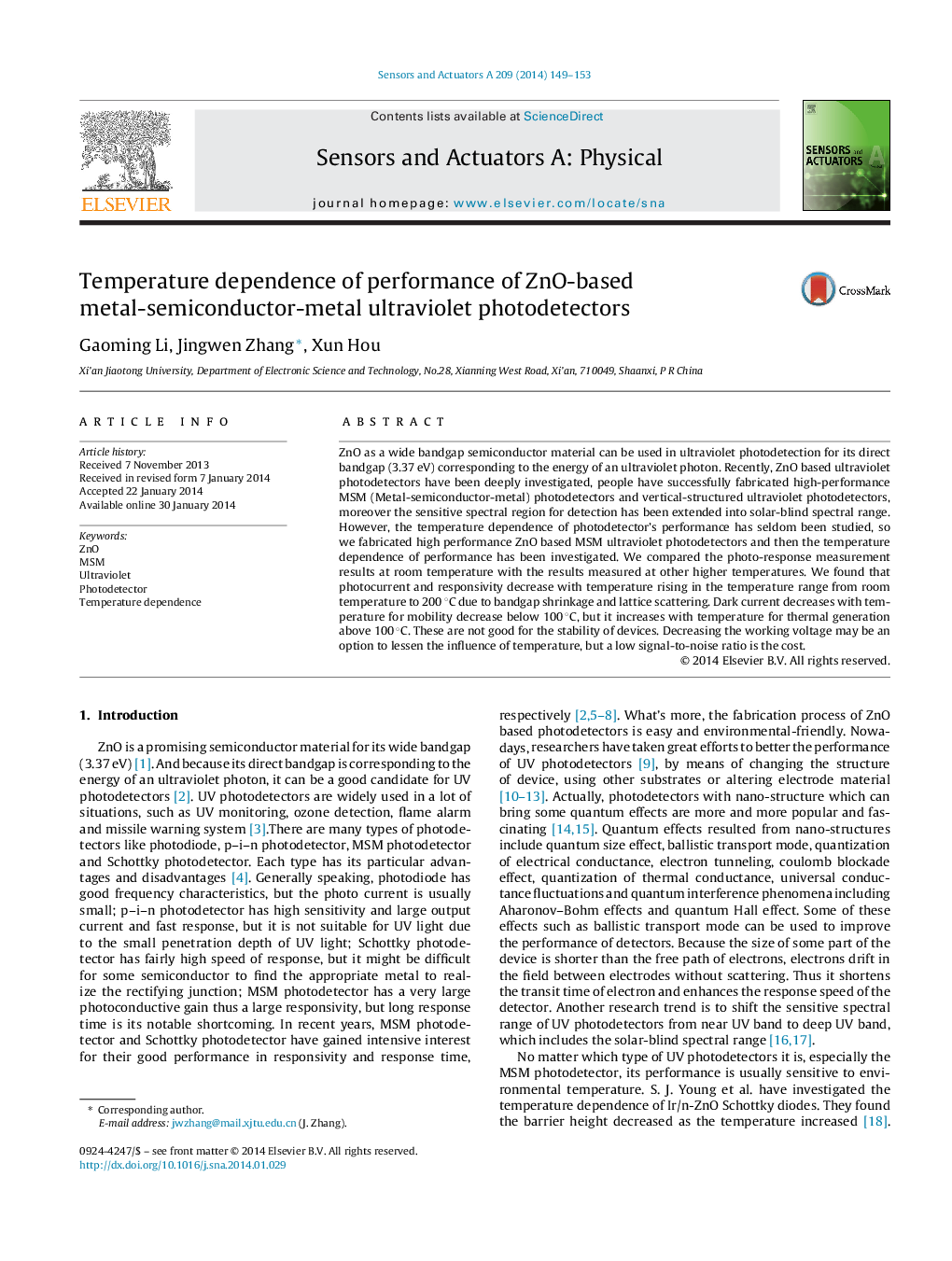| Article ID | Journal | Published Year | Pages | File Type |
|---|---|---|---|---|
| 737270 | Sensors and Actuators A: Physical | 2014 | 5 Pages |
•We demonstrate a temperature dependent resistivity of ZnO film.•We find that photocurrent and responsivity decrease with temperature rising.•We find that reducing the voltage is helpful to decrease the variation of responsivity.
ZnO as a wide bandgap semiconductor material can be used in ultraviolet photodetection for its direct bandgap (3.37 eV) corresponding to the energy of an ultraviolet photon. Recently, ZnO based ultraviolet photodetectors have been deeply investigated, people have successfully fabricated high-performance MSM (Metal-semiconductor-metal) photodetectors and vertical-structured ultraviolet photodetectors, moreover the sensitive spectral region for detection has been extended into solar-blind spectral range. However, the temperature dependence of photodetector's performance has seldom been studied, so we fabricated high performance ZnO based MSM ultraviolet photodetectors and then the temperature dependence of performance has been investigated. We compared the photo-response measurement results at room temperature with the results measured at other higher temperatures. We found that photocurrent and responsivity decrease with temperature rising in the temperature range from room temperature to 200 °C due to bandgap shrinkage and lattice scattering. Dark current decreases with temperature for mobility decrease below 100 °C, but it increases with temperature for thermal generation above 100 °C. These are not good for the stability of devices. Decreasing the working voltage may be an option to lessen the influence of temperature, but a low signal-to-noise ratio is the cost.
